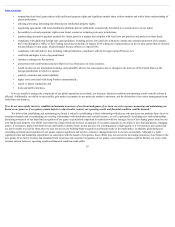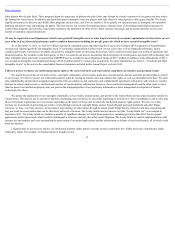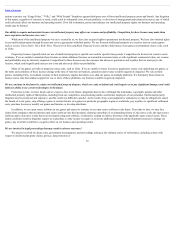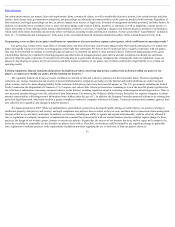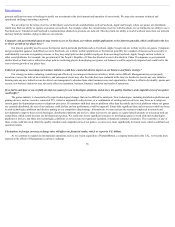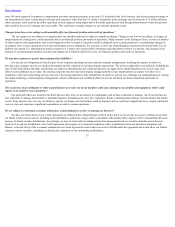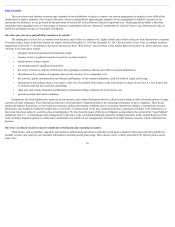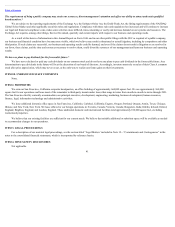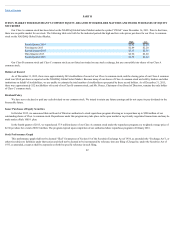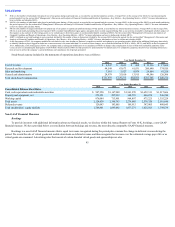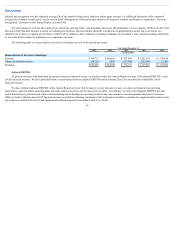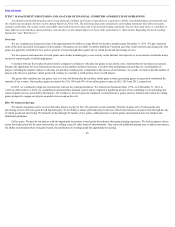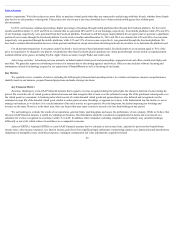Zynga 2015 Annual Report Download - page 42
Download and view the complete annual report
Please find page 42 of the 2015 Zynga annual report below. You can navigate through the pages in the report by either clicking on the pages listed below, or by using the keyword search tool below to find specific information within the annual report.
Table of Contents
These provisions may frustrate or prevent any attempts by our stockholders to replace or remove our current management by making it more difficult for
stockholders to replace members of our board of directors, which is responsible for appointing the members of our management. In addition, because we are
incorporated in Delaware, we are governed by the provisions of Section 203 of the Delaware General Corporation Law, which generally prohibits a Delaware
corporation from engaging in any of a broad range of business combinations with any “interested” stockholder for a period of three years following the date on
which the stockholder became an “interested” stockholder.
Oursharepricehasbeenandwilllikelycontinuetobevolatile.*
The trading price of our Class A common stock has been, and is likely to continue to be, highly volatile and could be subject to wide fluctuations in response
to various factors, some of which are beyond our control. Between December 31, 2014 and December 31, 2015, the stock price of our Class A common stock has
ranged from $2.20 to $3.13. In addition to the factors discussed in these “Risk Factors” and elsewhere in this Annual Report on Form 10-K, factors that may cause
volatility in our share price include:
• changes in projected operational and financial results;
• issuance of new or updated research or reports by securities analysts;
• market rumors or press reports;
• our announcement of significant transactions;
• the use by investors or analysts of third-party data regarding our business that may not reflect our actual performance;
• fluctuations in the valuation of companies perceived by investors to be comparable to us;
• the activities, public announcements and financial performance of our commercial partners, such as Facebook, Apple and Google;
• fluctuations in the trading volume of our shares, or the size of our public float relative to the total number of shares of our Class A, Class B and Class
C common stock that are issued and outstanding;
• share price and volume fluctuations attributable to inconsistent trading volume levels of our shares; and
• general economic and market conditions.
Furthermore, the stock markets have experienced extreme price and volume fluctuations that have affected and continue to affect the market prices of equity
securities of many companies. These fluctuations often have been unrelated or disproportionate to the operating performance of those companies. These broad
market and industry fluctuations, as well as general economic, political and market conditions such as recessions, interest rate changes or international currency
fluctuations, may negatively impact the market price of our Class A common stock. In the past, companies that have experienced volatility in the market price of
their stock have been subject to securities class action litigation. We have been the target of this type of litigation as described in the section titled “Legal Matters”
included in Note 12—“Commitments and Contingencies” in the notes to the consolidated financial statements included elsewhere in this Annual Report on Form
10-K. Securities litigation against us could result in substantial costs and divert our management’s attention from other business concerns, which could harm our
business.
OurClassAcommonstockpricemaybevolatileduetothird-partydataregardingourgames.
Third parties, such as AppData, AppAnnie and comScore publish daily data about us and other social game companies with respect to DAUs and MAUs,
monthly revenue, time spent per user and other information concerning social game usage. These metrics can be volatile, particularly for specific games, and in
many cases
39


